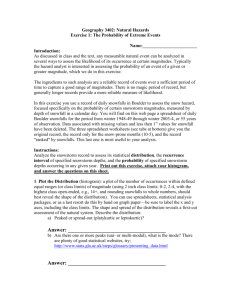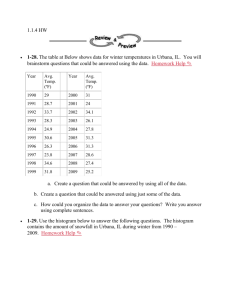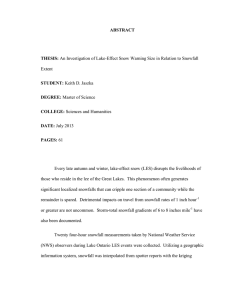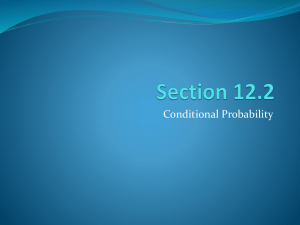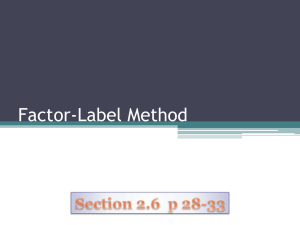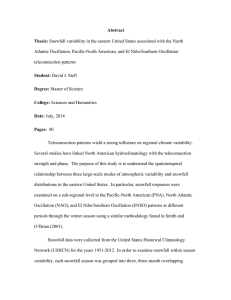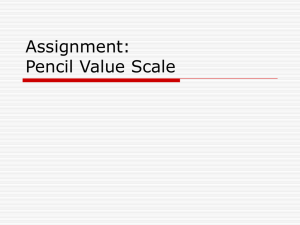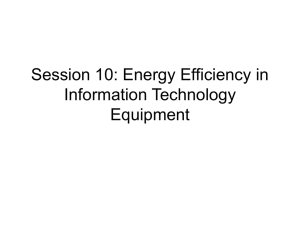Exercise 1 Word Document - University of Colorado Boulder
advertisement
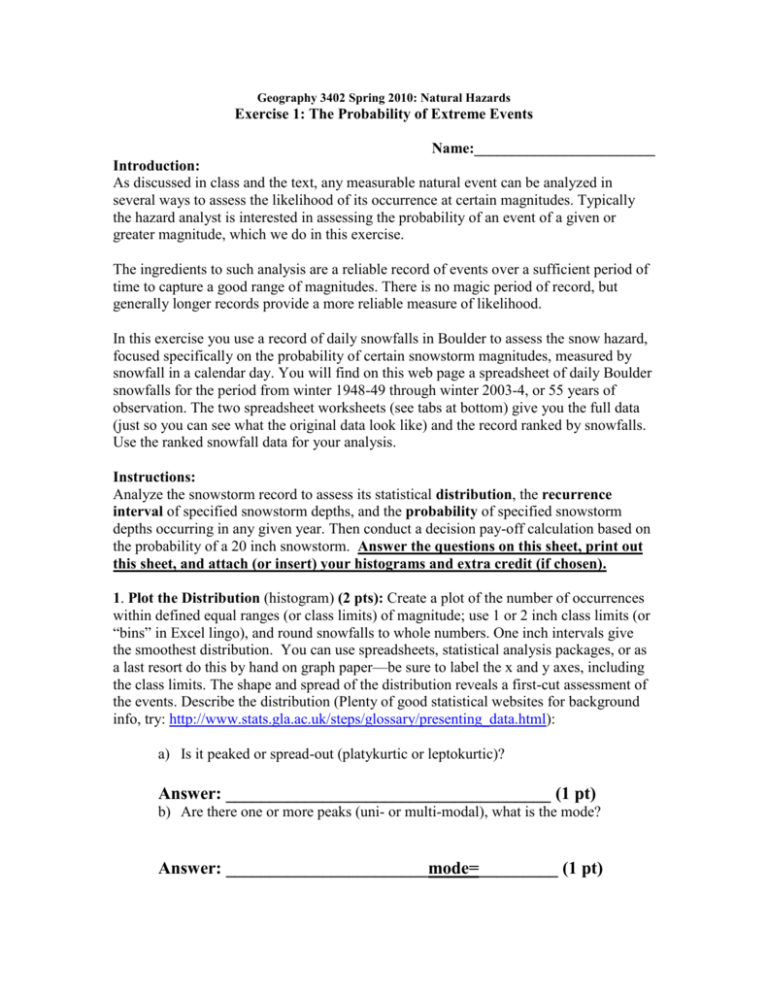
Geography 3402 Spring 2010: Natural Hazards Exercise 1: The Probability of Extreme Events Name:________________________ Introduction: As discussed in class and the text, any measurable natural event can be analyzed in several ways to assess the likelihood of its occurrence at certain magnitudes. Typically the hazard analyst is interested in assessing the probability of an event of a given or greater magnitude, which we do in this exercise. The ingredients to such analysis are a reliable record of events over a sufficient period of time to capture a good range of magnitudes. There is no magic period of record, but generally longer records provide a more reliable measure of likelihood. In this exercise you use a record of daily snowfalls in Boulder to assess the snow hazard, focused specifically on the probability of certain snowstorm magnitudes, measured by snowfall in a calendar day. You will find on this web page a spreadsheet of daily Boulder snowfalls for the period from winter 1948-49 through winter 2003-4, or 55 years of observation. The two spreadsheet worksheets (see tabs at bottom) give you the full data (just so you can see what the original data look like) and the record ranked by snowfalls. Use the ranked snowfall data for your analysis. Instructions: Analyze the snowstorm record to assess its statistical distribution, the recurrence interval of specified snowstorm depths, and the probability of specified snowstorm depths occurring in any given year. Then conduct a decision pay-off calculation based on the probability of a 20 inch snowstorm. Answer the questions on this sheet, print out this sheet, and attach (or insert) your histograms and extra credit (if chosen). 1. Plot the Distribution (histogram) (2 pts): Create a plot of the number of occurrences within defined equal ranges (or class limits) of magnitude; use 1 or 2 inch class limits (or “bins” in Excel lingo), and round snowfalls to whole numbers. One inch intervals give the smoothest distribution. You can use spreadsheets, statistical analysis packages, or as a last resort do this by hand on graph paper—be sure to label the x and y axes, including the class limits. The shape and spread of the distribution reveals a first-cut assessment of the events. Describe the distribution (Plenty of good statistical websites for background info, try: http://www.stats.gla.ac.uk/steps/glossary/presenting_data.html): a) Is it peaked or spread-out (platykurtic or leptokurtic)? Answer: _____________________________________ (1 pt) b) Are there one or more peaks (uni- or multi-modal), what is the mode? Answer: _______________________mode=_________ (1 pt) c) Does the distribution show positive or negative skew? Answer: ___________________________________ (1 pt) 2. Calculate the recurrence interval or return period r (or Tr in the text) of an 11 inch or greater snowfall (this might close the schools!). Be sure to include the units of your answer: Formula Tr = years of observation / # of events Answer: ____________________________________ (1 pt) 3. Calculate the probability of an 11 inch or greater snowfall in a given year, as a decimal and as a percentage. Formula p = # events/years (Percent can also be calculated as: P% = 100/r) Answer:_____________________________________ (1 pt) 4. Calculate the return period (with units noted) of a 16 inch or greater daily snowfall (this should provide local kids a Snow Day, though CU rarely closes!) Answer:__________________________________ (1 pt) 5. Calculate the probability of a 16 inch or greater snowfall in a given year, as a decimal and as a percentage. Answer:__________________________________ (1 pt) 6. Decide what annual probability of a 20 inch snowfall would justify buying a bigger snowplow that cost $50,000 just to handle the 20 inch plus events. Go to the “Decision Analysis” tab worksheet, and recognize this as a case similar to the “Fisherman’s Dilemma” in the Burton, Kates and White reading. Run the expected utility analysis for 10% (.10) increments of increasing probability to find at what level of probability it would start to pay off to buy the equipment (for the given consequences, or costs). The first two are given for you. The payoff accrues in the first year after you make your choice (even if the equipment can last several years). Answer: __________ (1 pt) Extra Credit: (1 pt) (a) Estimate the magnitude of the 100 year (.01 probability) 24-hr snowfall event in Boulder. This is most simply done by plotting at least two R’s and applying simple linear extrapolation on 2-cyle log paper, which you can easily download from the web. Answer:___________________________(turn in your plot)
